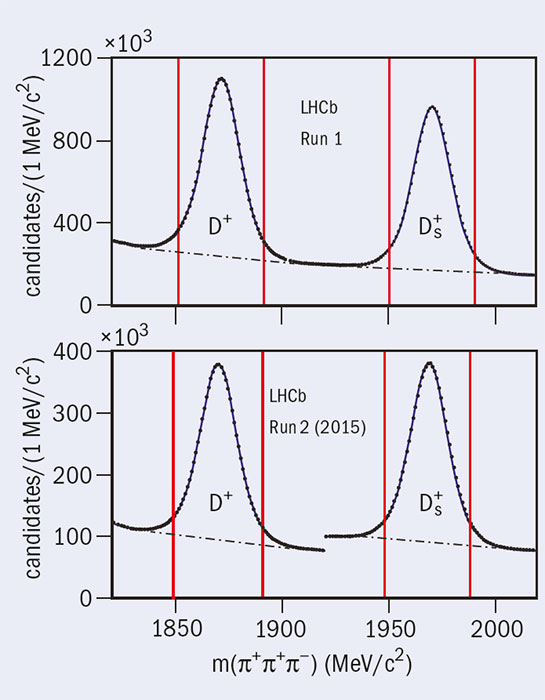CP violation, which relates to an asymmetry between matter and antimatter, is a well-established feature of the weak interaction that mediates decays of strange, charm and beauty particles. It arises in the Standard Model from a single complex phase in the Cabibbo–Kobayashi–Maskawa matrix that relates the mass and flavour eigenstates of the quarks. However, the strength of the effect is well below what is needed to explain the dominance of matter over antimatter in the present universe. The LHCb collaboration has now looked for evidence of CP violation in the strong interaction, which binds quarks and gluons within hadrons.

In principle, the theory of the strong interactions, quantum chromodynamics (QCD), allows for a CP-violating component, but measurements of the electric dipole moment of the neutron have shown that any effect in QCD must be very small indeed. This apparent absence of CP violation in QCD is known as “the strong CP problem”.
One way to look for evidence of CP violation in strong interactions is to search for η and η′(958) meson decays to pairs of charged pions: η(′) → π+π–, both of which would violate CP symmetry. The LHCb collaboration has recently used its copious production of charm mesons to perform such a search, establishing a new method to isolate potential samples of η and η′ decays into two pions. The D+ and D+s mesons (and their opposite sign modes) have well-measured decay modes to ηπ+ and η′π+, as well as to π+π+π–. Therefore, any η or η′ decays to π+π– would potentially show up as narrow peaks in the π+π– mass spectra from D and Ds decays to π+π+π–.
The LHCb team used a sample of about 25 million each of D+ and D+s meson decays to π+π+π– collected during Run 1 and the first year of Run 2 of the LHC (figure 1). The analysis used a boosted decision tree to suppress backgrounds, with fits to the π+π– mass spectra from the D+ and D+s decays used to set limits on the amount of η and η′ that could be present. No evidence for the CP-violating decays was found and upper limits were set on the branching fractions, at 90% confidence level, of less than 1.6 × 10–5 for η → π+π– and 1.8 × 10–5 for η′(958) → π+π–. The result for the η meson is comparable with the current world best, while that for the η′ is a factor three below the previous best, further constraining the possibility for a new CP-violating mechanism in strong interactions.





